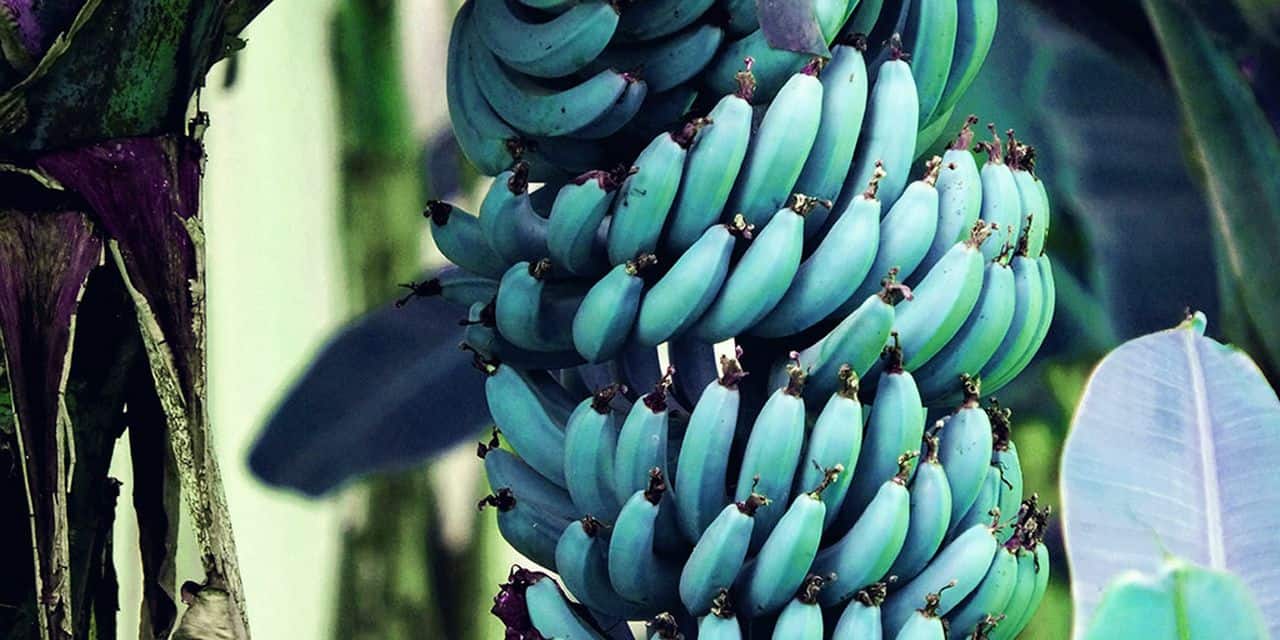

Unlike other bananas, Blue Java can survive colder climates. For our friends in Hawaii: Several local growers cultivate the Ice Cream banana, so scout out farmers' markets on the big island and Oahu.īut if you don't want to spend a fortune shipping bananas or traveling to Hawaii, you can always try purchasing a tree and planting one in your own backyard or even indoors. You can purchase the banana in bulk from this Florida-based company. Options for acquiring the Blue Java outside of Asia and the South Pacific are limited. Others suggest mixing it into a smoothie with peanut butter or doing the old trick of freezing and blending the bananas to make an all-natural ice-cream alternative. It's also widely known as the "Ice Cream" banana for its sweet and soft flesh, which bears a similarity in taste to vanilla custard or ice cream. Its white flesh contains black seeds, which isn't exactly common for a dessert banana. The unripe fruit takes on a greenish-silver-blue hue due to its wax coating, hence the name. Banana enthusiasts in recent years have begun flocking to richer alternatives like the Blue Java banana ( Musa acuminata 'Blue Java'), which is grown in many parts of Asia, Australia and Hawaii. That is a ton of bananas every year! All are capable of fruiting that first year.Have you ever found the usual bananas in your grocery store to be a little, well, bland? You're not alone. With 6-8 plants every season - each yielding 88 bananas - well, you do the math. One banana plant will become two in a few months and then four so you should have somewhere between 6-8 plants every season. The average head of fruit produces 88 bananas! Some people get more when they do a lot of extra watering or fertilizing. After that, it will fruit year-round since it is basically a giant herb - although winter sometimes interferes. If you start with a division, it will yield fruit for the first time between 9-12 months after planting. If you start with a pup, you will start to see fruit after 18-months. Alex assures that even if you do not know what you are doing, your plant will reach at least 10 feet tall! The height of the mature blue java banana plant is approximately 10-14 feet. Come February, plant it straight into the ground. Once the freeze is over, bring it back outside. Bring it inside into a warmer room like the kitchen or bathroom when there is a night with frost or freeze. The second step is making sure the soil does not dry out - evenly moist and water it every once in awhile.

It will prefer the outdoor temperatures opposed to indoor temperatures. You keep the pups like you would with a potted house plant. It is key to add mulch or potting soil to our native soil because it is devoid of organic matter since there is not a lot of decay.īaby them through the winter and plant in February. During the summer, you will want to every day or every other day. Dig a hole twice as wide as the pot it came in, add a bag of mulch/potting soil with the native soil, mix it together, put the plant in the ground, and water as needed depending on the time of year.

For most people, it will be the south or east exposure in their yard. You want to pick the sunniest location during the winter in your yard and do not worry about how hot it will get during the summer. Peña claims the planting is fairly simple. They dig those up and pot them as larger plants that are ready to go straight into the ground. They also sell divisions of mature plants that have been growing at the nursery. Their baby pups are plantable-size in February. Tropica Mango sells two sizes of these bananas trees. Instead of planting the blue java bananas among rock and desert landscape, you create a micro-climate with other plants and ground cover. The extreme heat can be combated by just watering and micro-climate. The weather does not get too cold - which is the biggest danger. This is not something you are going to find at any grocery store!Īlex Peña, the owner of Tropica Mango Rare and Exotic Tropical Fruit Nursery, explains that temperatures here in Arizona are actually very conducive to growing tropical plants. The blue java banana is a banana species from Central America that has the unique flavor of ice cream and blue-tinted skin. See what these blue bananas look like in the video above! Lucky for you, these plants are available for purchase at Tropica Mango Rare and Exotic Tropical Fruit Nursery in Apache Junction. Blue bananas with the consistency of ice cream. Yes, blue bananas DO EXIST and the best part is they taste like VANILLA ICE CREAM!Īgain, blue bananas.


 0 kommentar(er)
0 kommentar(er)
